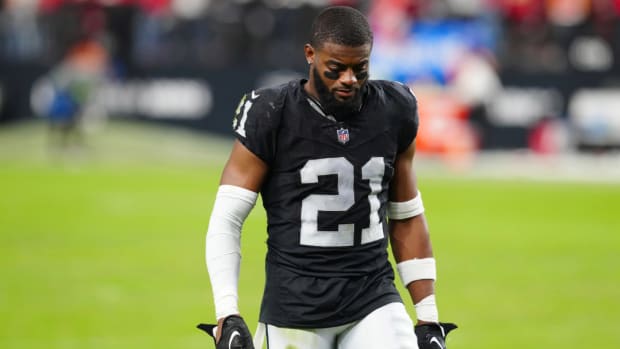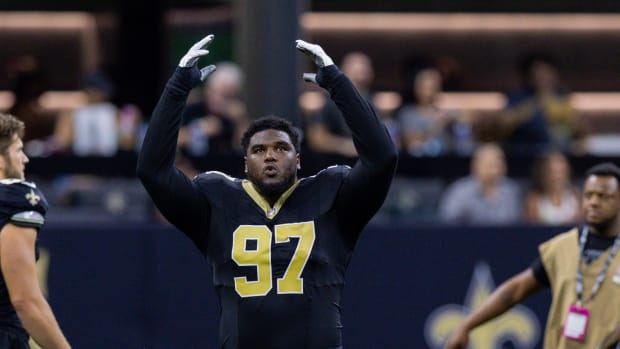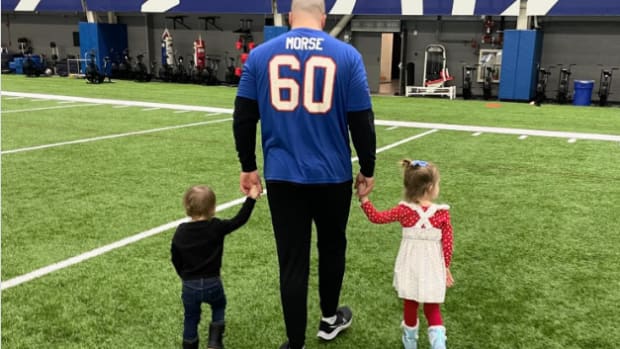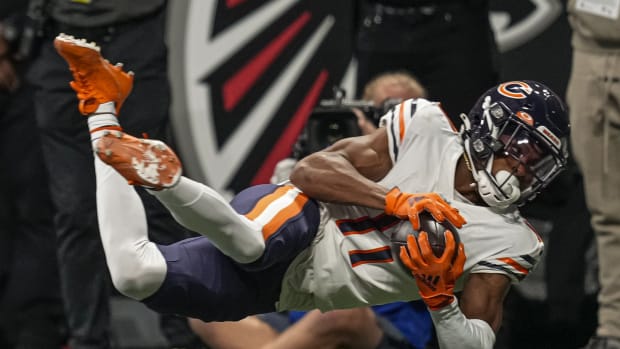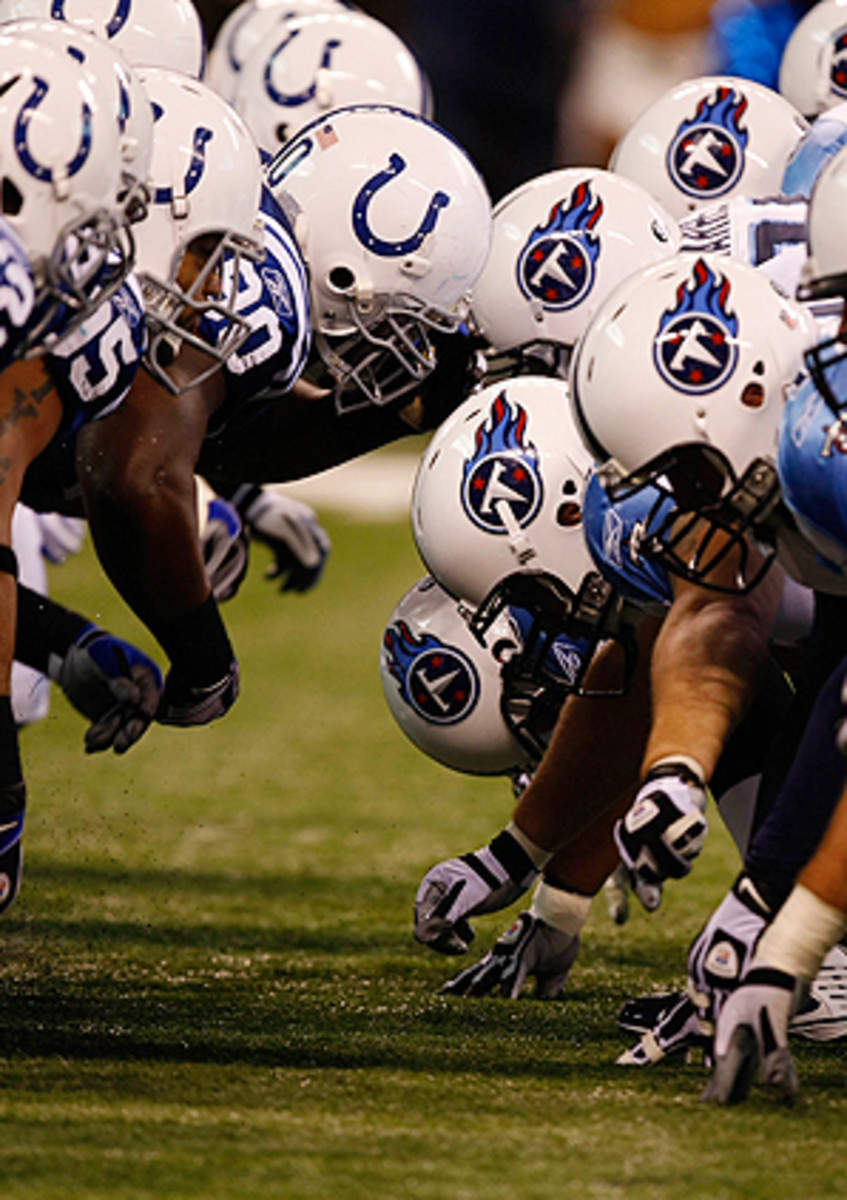
Parity party: NFL in midst of an unprecedented logjam in standings
SI.com's 2010 NFL Standings
Do the math. It's midseason and we really don't know anything for certain about the composition of the playoffs that will begin in less than two months. The biggest cushion held by any division leader is one slim game, and that's the case only in the NFC East, where the 6-2 Giants lead the second-place Eagles (5-3). There are four other divisions that feature two teams tied for first, and three more divisions where the top two clubs are separated by a mere half game at the season's midway point.
Let me repeat that for emphasis: That's seven out of eight divisions where the top two teams are either tied or within a half game of each other. The eighth division has a first-place team with a whopping one-game advantage. Good luck to those hearty folks who are responsible for churning out the league's playoff scenarios come late November. Better get a new computer.
According to my research, the confluence of having all eight divisions that tight after Week 9 of the season (by which time everyone has played eight games) has never happened since the NFL went to eight divisions of four teams each in 2002.
For comparison sake, let's look at where we were last year at this time. In 2009, we had five division leaders with a two-game advantage or more after Week 9. Seven of the eight eventual division leaders were already in place, and most of them had pretty comfortable leads. The Saints and Colts, of course, were still undefeated (and would be for at least another month or so) and on a collision course for Super Bowl XLIV in Miami.
New England (6-2) was up two games on the Jets (4-4) in the AFC East. Indianapolis (8-0) had a whopping 3½ game bulge on Houston (5-4) in the AFC South. Minnesota (7-1) was up three games on Chicago and Green Bay (both 4-4) in the NFC North. Ditto for the Saints (8-0) over Atlanta (5-3) in the NFC South. And Arizona (5-3) was at least two games better than anyone in the NFC West.
This year? It's a division-leading free-for-all. Through nine weeks, we've got 12 teams that can rightfully claim at least a share of first-place status, and all told, 21 clubs are sitting .500 or better. At midseason, 24 teams, or three-fourths of the league, are within two games of first place or closer.
It's so competitive in 2010 that it's hard to keep track of who's hot and who's not. Half of the league's eight divisions feature ties atop them: The AFC East, where the Jets and Patriots are both 6-2; the AFC North, where the Ravens and Steelers are each 6-2; the AFC South, where the Titans and Colts at 5-3 (with the Jaguars and Texans just one game back at 4-4); and in the mild, mild NFC West, where the Seahawks and Rams are both 4-4, just one game better than the Cardinals (3-5).
In three other divisions, the first-place team holds just a half-game advantage over their nearest pursuer. In the NFC, the North division has the Packers (6-3) just a half-game up on the Bears (5-3). In the South, the Falcons (6-2) hold the same narrow lead over the defending Super Bowl champion Saints (6-3), with the Bucs just one game back at 5-3. And in the AFC West, Kansas City (5-3), fresh off its overtime loss at Oakland, is just a half-game better than the resurgent Raiders (5-4).
In other words, this is the mother of all parity-infused seasons in the NFL so far. You're going to think I'm exaggerating, but you can really only make a case for five out of 32 teams having played themselves completely out of playoff contention at midseason: Buffalo (0-8) and Cincinnati (2-6) are out of it in the AFC, while Dallas (1-7), Carolina (1-7), and Detroit (2-6) appear pretty dead in the water in the NFC.
What about San Francisco (2-6) you say? The 49ers">49ers, as bad as they've been, are just two games out of first in the NFC West, with eight games left. You can even argue that the 2-6 Broncos, with five of their six division games still to be played, have a shot to make trouble in the AFC West. Denver trails first-place Kansas City by three games with eight remaining, but it can make up plenty of ground with those division games, which we all know have the potential of producing two-game swings in the standings.
And the closeness of this year's races is not limited exclusively to the first and second-place teams in each division. In six of the eight divisions, the top three (or in one case, even four) teams are separated by two games or fewer through nine weeks.
To wit:
• In the AFC West, the Chiefs, Raiders and Chargers (4-5) are clumped just 1½ games apart, top to bottom, with all three looking like they intend to make some noise in the season's final two months.
• In the AFC East, third-place Miami (4-4) is just two games behind the co-leading Patriots and Jets, but granted, it's hard to take the Dolphins too seriously until they manage to win a home game.
• The AFC South is the NFL's poster child for this season. All four teams are within a game of each other. The first-place Titans and Colts (both 5-3) have a week's worth of breathing room over the last-place Texans and Jaguars (both 4-4). And if you're keeping score, the Jags have beaten the Colts, the Colts have split with the Texans, and the Titans have beaten the Jags. Got that?
• The same one-game margin separates the top three teams in the NFC West, which nobody seems to want to win. Seattle (4-4) keeps getting blown out. The Cardinals (3-5) have been a disaster without Kurt Warner. And the 49ers (2-6) are mired in last place. That leaves the surprising Rams (4-4) and rookie quarterback Sam Bradford looking like the class of the division. Honest.
• In the NFC South, Atlanta, New Orleans and Tampa Bay are all within one game of each other, but the Falcons do own wins over the Saints and Bucs, and this year that passes for dominance.
• And lastly, in the NFC East, the third-place 4-4 Redskins keep riding that rollercoaster, but remain within striking distance of the 6-2 first-place Giants and just a game behind the 5-3 second-place Eagles. By now, however, Washington has the sneaking suspicion it traded for the wrong Philadelphia quarterback.
Trust us, this kind of divisional Yahtzee doesn't just tumble out of the cup every year in the NFL. In the first eight seasons of the current divisional alignment, it has been commonplace for at least one or two first-place teams to have runaway leads at this point of the season. It hasn't been all that long ago that we've had teams clinching divisions in late November.
In 2008, three of eight division leaders had cushions of more than a game, with Tennessee holding a four-game advantage over the Colts in the AFC South and Arizona three games up on the pack in the NFC West.
Through nine weeks of 2007, the soon-to-be-undefeated Patriots had a massive 4½ game in the AFC East. But that was a tightly-contested year, too, because other than New England, no one else had opened up much ground at midseason. Seven of the eight divisions that season featured first-place teams with no more than a one-game lead after nine weeks.
In 2006, we had five of eight division leaders with at least a two-game margin through nine weeks, and in 2005, three of eight first-place teams held cushions of two or more games at midseason. And over the span of 2002-2004, the NFL at midseason never featured less than three first-place teams with leads of two games or more.
This year, a two-game lead might set you up for charges of complacency and overconfidence. But it also might prompt a few clubs to start printing playoff tickets. As the second half begins, I'm making no predictions unless forced to do so. Other than this one: When it comes to playoffs scenarios, prepare for a blizzard of them this winter.
































